Why Are Umbrella & Excess Liability Insurance Costs Rising in Florida, and Do Businesses Still Need It?
See How We're Different
or call us: 954-233-0733
In recent years, businesses across Florida have been grappling with a significant increase in the costs associated with umbrella and excess liability insurance. This trend raises important questions about the underlying factors driving these price hikes and whether businesses still require such coverage. Understanding these dynamics is crucial for business owners aiming to protect their assets and navigate the complexities of the insurance landscape.
Understanding Umbrella and Excess Liability Insurance
Before delving into the reasons behind rising costs, it is essential to clarify what umbrella and excess liability insurance entails. Both types of insurance provide additional coverage beyond the limits of other liability policies, such as general liability or auto liability insurance. These policies serve as crucial components of a comprehensive risk management strategy, especially for businesses and individuals who wish to safeguard their assets against unforeseen legal challenges.
What is Umbrella Insurance?
Umbrella insurance acts as a safety net, offering coverage for claims that exceed the limits of existing policies. For instance, if a business faces a lawsuit resulting in a judgment of $2 million, but its general liability policy only covers up to $1 million, umbrella insurance can cover the remaining $1 million. This type of insurance is particularly valuable in today's litigious society, where legal claims can escalate quickly. Furthermore, umbrella insurance often extends coverage to claims that might not be included in standard liability policies, such as certain types of personal injury claims or damages resulting from libel and slander. This added layer of protection can be a game-changer for many businesses, allowing them to operate with greater peace of mind.
What is Excess Liability Insurance?
Excess liability insurance, on the other hand, provides additional coverage that kicks in after the limits of a specific policy are reached. Unlike umbrella insurance, which can cover a broader range of risks, excess liability insurance is typically tied to specific underlying policies. This makes it essential for businesses that want to ensure they have adequate protection against high-cost claims. For example, a company with a commercial auto policy that has a limit of $1 million might purchase an excess liability policy that provides an additional $5 million in coverage. This targeted approach allows businesses to tailor their insurance needs based on their unique risk profiles, ensuring that they are not left vulnerable in the event of a catastrophic incident. Moreover, understanding the nuances between these two types of insurance can help policyholders make informed decisions about their coverage options, potentially saving them significant amounts in the long run.
Factors Contributing to Rising Costs
Several interrelated factors contribute to the rising costs of umbrella and excess liability insurance in Florida. Understanding these elements can help business owners make informed decisions regarding their insurance needs.
Increased Litigation and Claim Severity
One of the most significant drivers of rising insurance costs is the increase in litigation and the severity of claims. Florida has seen a surge in lawsuits, particularly in areas such as personal injury and property damage. This uptick in legal actions often results in higher payouts, which insurance companies must account for in their premium calculations.
Moreover, the severity of claims has also escalated. With rising medical costs and legal fees, even seemingly minor incidents can lead to substantial financial liability. Insurers are adjusting their rates to mitigate the risk associated with these heightened exposures, leading to increased premiums for policyholders.
In addition, the legal environment in Florida can be particularly challenging for insurers. The state is known for its plaintiff-friendly laws, which can encourage more lawsuits. This environment not only raises the number of claims but also increases the average payout per claim, further straining the resources of insurance companies. As a result, businesses must be vigilant about their risk management strategies to avoid potential pitfalls that could lead to costly claims.
Natural Disasters and Climate Change
Florida is no stranger to natural disasters, including hurricanes, floods, and wildfires. The frequency and intensity of these events have been exacerbated by climate change, leading to increased insurance claims and higher costs for coverage. Insurers are now factoring in the potential for catastrophic events when determining premiums, which has resulted in a significant rise in costs for umbrella and excess liability insurance.
As businesses face the threat of property damage and liability claims stemming from natural disasters, insurers are compelled to raise rates to maintain financial stability. This trend is likely to continue as climate-related risks become more pronounced. Furthermore, the unpredictability of weather patterns means that insurers must prepare for worst-case scenarios, which can lead to more conservative underwriting practices and higher premiums across the board.
In response to these challenges, many businesses are exploring additional risk mitigation strategies, such as investing in disaster preparedness and recovery plans. By proactively addressing potential vulnerabilities, companies can not only protect their assets but may also find opportunities to negotiate better insurance terms or lower premiums in the long run.
Regulatory Changes and Market Dynamics
Changes in regulations and market dynamics also play a crucial role in shaping insurance costs. In Florida, the insurance market has faced increased scrutiny and regulatory adjustments aimed at protecting consumers. While these changes are intended to enhance market stability, they can also lead to increased costs for insurers, which are subsequently passed on to policyholders.
Additionally, the competitive landscape within the insurance industry can impact pricing. As insurers adjust their risk assessments and coverage offerings, businesses may find themselves facing higher premiums as companies seek to balance profitability with consumer demand. This dynamic can create a challenging environment for business owners who must navigate fluctuating costs while ensuring adequate coverage.
Moreover, the rise of insurtech companies is beginning to disrupt traditional insurance models. These tech-driven firms often leverage data analytics and artificial intelligence to offer more tailored coverage options and competitive pricing. While this innovation can benefit consumers, it also pressures established insurers to reevaluate their pricing strategies and operational efficiencies, which may contribute to further fluctuations in premium rates across the market.
Do Businesses Still Need Umbrella and Excess Liability Insurance?
Given the rising costs, many business owners may question whether umbrella and excess liability insurance is still a necessary investment. The answer largely depends on the specific circumstances and risk exposure of each business.
Assessing Risk Exposure
Every business operates within a unique risk landscape. Factors such as the industry, size, and operational activities can significantly influence the level of risk exposure. For example, businesses in high-risk sectors, such as construction or healthcare, may face greater liability risks than those in lower-risk industries.
Conducting a thorough risk assessment is crucial for understanding whether additional liability coverage is necessary. Businesses should evaluate their current insurance policies, potential exposure to lawsuits, and the financial implications of a significant claim. This assessment can help determine if umbrella or excess liability insurance is a prudent investment.
Furthermore, it's essential to consider the potential for emerging risks that may not have been previously accounted for. For instance, the rise of digital technology and online operations has introduced new liability concerns, such as data breaches and cyberattacks. Businesses must stay informed about these evolving threats and how they could impact their risk profile, ensuring that their insurance coverage evolves alongside their operational landscape.
Financial Protection and Peace of Mind
Even with rising costs, umbrella and excess liability insurance can provide invaluable financial protection. A single lawsuit can result in substantial legal fees and settlements, potentially jeopardizing a business's financial stability. By securing adequate coverage, businesses can mitigate the risk of crippling financial losses and ensure that they are prepared for unforeseen events.
Moreover, having this coverage can offer peace of mind to business owners, allowing them to focus on growth and operations rather than constantly worrying about potential liabilities. In an unpredictable world, this sense of security can be worth the investment. It also fosters a culture of risk management within the organization, encouraging employees to be more aware of their actions and the potential consequences, ultimately leading to a more responsible business environment.
Exploring Alternatives and Adjustments
While the rising costs of umbrella and excess liability insurance may be concerning, businesses have options for managing these expenses. Exploring alternative coverage options, adjusting policy limits, or increasing deductibles can help reduce premiums while still maintaining adequate protection.
Additionally, businesses can work closely with insurance brokers to identify tailored solutions that meet their specific needs. By understanding the nuances of their coverage options, business owners can make informed decisions that balance cost and protection effectively. It's also beneficial to regularly review and update insurance policies to reflect changes in business operations, ensuring that coverage remains relevant and sufficient as the business grows or pivots in response to market demands. This proactive approach not only safeguards the business but also enhances its resilience against unforeseen challenges.
Conclusion
The rising costs of umbrella and excess liability insurance in Florida reflect a complex interplay of factors, including increased litigation, natural disasters, and regulatory changes. While these trends may pose challenges for business owners, the need for adequate liability coverage remains critical.
By conducting thorough risk assessments, exploring coverage alternatives, and working with knowledgeable insurance professionals, businesses can navigate the evolving insurance landscape and secure the protection they need. Ultimately, investing in umbrella and excess liability insurance can safeguard a business's future, ensuring that it remains resilient in the face of unforeseen challenges.








